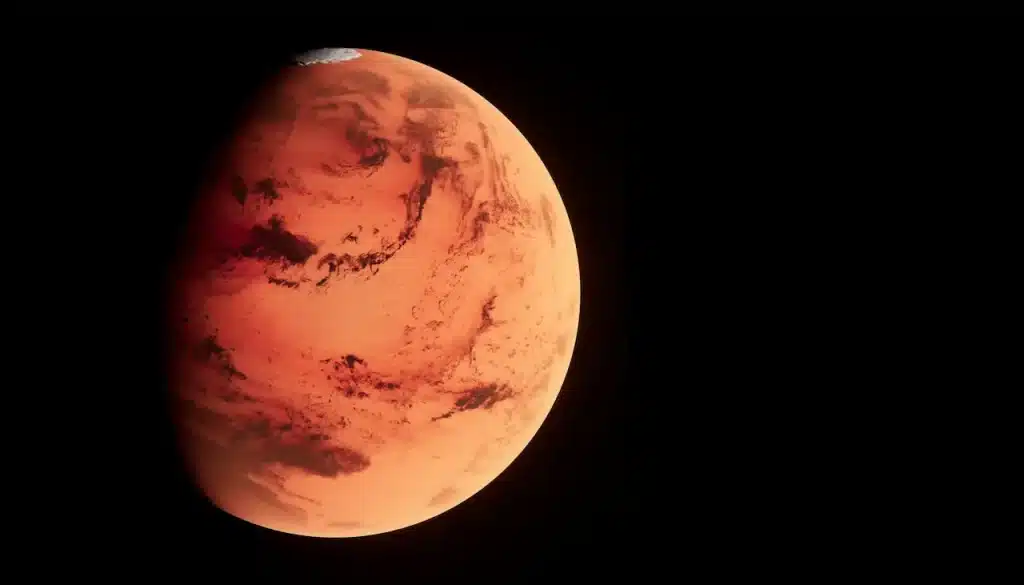The Science Behind Mars Missions
The science behind Mars missions has stirred the imagination, captivating astronomers, inspiring science fiction writers, and fueling the ambitions of stargazing entrepreneurs with dreams of launching missions beyond Earth. Mars, the fourth planet away from the Sun, has always been a symbol for exploration and possibilities. As technology progresses and interplanetary plans are developed, the question of whether we will ever set foot on Mars.
Mars is the closest and most Earth-like planet in our solar system, capturing our imagination with its reddish glow and mysterious landscape. Ancient riverbeds, towering volcanoes, and deep canyons suggest a once-active world. Though its days and brief summer temperatures resemble Earth’s, the thin, carbon dioxide-rich atmosphere offers little protection, plunging winter nights to -140 °C. With only a third of Earth’s gravity and a harsh, barren surface, Mars remains a challenging frontier but one that continues to inspire dreams of exploration and even habitation.

Human Exploration of Mars
Human missions to Mars are still a long way off, despite all the optimism following the Apollo era. Although the technical challenges are significant — such as long-distance travelling, life support and safe return — they are within our reach. Justifying the enormous cost and risk has proven to be the greater challenge. Some supporters argue that Mars exploration represents not only a technological and scientific milestone, but also an expression of human ambition and curiosity.
Mars500, a joint European-Russian experiment that saw six participants live in isolation for 520 days in a mock Mars mission. In 2023, NASA launched CHAPEA, a series of simulated one-year Mars surface missions with crews living inside 3D-printed habitats. The actual missions are classified as opposition class (shorter journeys with brief stays on Mars) or combination class (longer journeys that allow up to 550 days on the surface). The majority of studies prefer the latter because it makes better use of time and resources.
Some mission strategies are different. Some propose sending robots ahead to prepare habitats and produce fuel by in situ resource utilisation (ISRU). while others imagine astronauts carrying everything they need. Crew health is a major concern. Long-term exposure to microgravity and radiation, as well as psychological isolation, pose significant risks. Planetary Protection is another major issue: keeping Mars clean from Earth-based contamination until the search for Life is completed. This also includes ensuring that any astronauts or samples returning to Earth do not pose a threat. Robotic sample-return missions will likely resolve most of these issues before human exploration starts.
Sending Astronauts to Mars
To prepare to send astronauts to Mars, it is necessary to have a thorough understanding of its environment. This includes everything from the thin atmosphere to radiation hazards that astronauts may encounter. This knowledge is crucial for planning surface operations, designing life support systems and ensuring crew safety. The proposed M-MATISSE missions, which were highlighted at the Royal Astronomical Society’s National Astronomy Meeting in Durham in 2025, are a promising step in the right direction. The mission, led by UK scientists, aims to improve our understanding of space weather conditions on Mars – critical for robotic and future human exploration.
M-MATISSE is a concept that involves sending two robotic spacecraft to Mars. Each orbiter will be equipped with instruments capable of studying different layers in the atmosphere and environment of Mars. The orbiters will investigate the Magnetosphere and Ionosphere, and Thermosphere to help scientists better understand how charged particles interact with the Martian atmosphere and how gases escape into space. They would also monitor the lower atmosphere and track dust storms, radiation exposure, and other factors that could impact both human and spacecraft missions. M-MATISSE’s analysis of these complex systems could give crucial insights into Mars’s changing climate and pave the path for sustainable and safe human exploration.

Why Mars?
Mars is Earth’s closest neighbour in the solar system, at an average distance of 140 million miles. It receives enough sun to be able to use solar energy and support life if the technology is developed. Although the planet is very cold, we can adapt. We could use engineering and innovation to build heated habitats or explore large-scale surface terraforming.
Mars’ atmosphere is one of its most exciting features. It is thin, mainly composed of carbon dioxide, but also contains nitrogen and argon gases, which can be used for growing plants in greenhouses. It is possible to survive and produce food for a long time. Mars also has ice at its poles, or possibly underground. This water could be used to produce fuel, for agriculture, and as drinking water.
Mars shares many physical similarities with Earth. Mars’ gravity is 38% less than Earth’s. This allows it to be easier to move heavy items and reduces the strain on the body over time. A Martian day lasts almost the same as a 24-hour-plus-37-minute-long Earth day, making it easier for humans to adapt to life on another planet. Mars could become a second home to humanity with the right planning.
Geology of Mars
Mars has a rich geological past. Mars, which formed 4.6 billion years ago along with the rest of our solar system, once looked like a young Earth. It is likely that around 3.8 billion years ago, Mars hosted oceans and lakes under a thicker atmosphere, right when life started on Earth.
The water has now disappeared from the surface of Mars, but its legacy remains. Martian landscapes are marked with ancient riverbeds, lakes, and what could be an ocean coastline. At the poles, ice remains frozen over waters beneath a layer of seasonal carbon dioxide. As summer approaches the southern pole, carbon dioxide begins to fade, revealing water ice.
Mars’ thin, dusty atmosphere is primarily carbon dioxide. The surface of Mars has been explored by robots, but many mysteries remain. Mars’ geological features may reveal secrets about its past and provide clues as to the solar system’s earliest days.
Many people ask Is there life on Mars?
Since the first telescopic images of Mars were taken, humans have wondered if life has ever existed there. Early speculations focused on intelligent life, but today’s focus is on microbial organisms and the conditions that may have enabled them to exist. NASA’s Viking mission conducted sophisticated experiments in the 1970s to detect life, but its negative results caused decades of scepticism.
Since then, that outlook has changed. Scientists discovered that life on Earth thrives in extreme environments superheated ocean vents, acidic lakes, and deep underground rocks, suggesting that life could survive in Mars-like conditions. The studies also show that life could have started quickly on Earth, suggesting that life can emerge easily where conditions are right. Evidence suggests that Mars’ early climate was warmer and wetter, perhaps similar to Earth, and that meteorites were exchanged between the two planets. This raises the possibility that they may have shared or crossed-seeded origins.
A 1996 Martian meteorite caused excitement when it was claimed to contain fossilised bacteria. However, further research revealed that the explanations were not biological. Mars exploration is still driven by the search for evidence of life. This includes organic molecules and signs of current life, which can be found in sheltered environments like underground ice or salty flows. The question of whether life is ancient or ongoing on Mars remains one of the most fascinating scientific quests.




